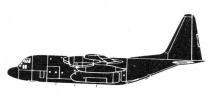Incident Overview

Description
The Beechcraft 200C Super King Air, serial 101001, took off at 07:33 local time from Stockholm-Bromma Airport with two pilots on board. The purpose of the flight was to land in Halmstad and take passengers on board for the onward flight to Visby. The flight was conducted according to a civilian flight plan until the start of the approach to Halmstad. One of Linjeflyg’s Fokker aircraft approached the approach beacon at the same time as Beech and its higher speed caused Malm control to request the crew to make a delayed turn to the south for separation. Subsequently, 101001 was radar vectored and was cleared to approach to runway 19. At 08:33 at about 8 nautical miles (NM) from the threshold, 101001 reported a stabilised approach and was then cleared to proceed and to contact Halmstad tower. At 08:34 101001 reported to the tower that it was “established a little obliquely” on the ILS to runway 19. The tower then gave clearance to continue the approach and requested the crew to report when the aircraft passed the Outer Marker. However, no Outer Marker crossing message was heard in the tower. At 08:35 two short radio transmissions were recorded in the tower, probably originating from 101001. The controller then made several radio calls without receiving any response from the aircraft. At 09:14 the aircraft was found to have crashed on a wooded hillside on Nyrssen (80-95 m above sea level) about five km (2.6 NM) north-northwest of the runway 19 threshold. The aircraft had flown into a number of tree tops for a distance of about 100 m on a heading of about 165ø. The crew had then presumably tried to climb away after which the aircraft struck the ground uncontrolled in an inverted position and crashed. The two occupants died immediately on impact. A major fire broke out, destroying most of the aircraft. During the initial approach from the Hilda VOR beacon, the captain should have had the radial set to 230ø. If he then forgot to change to ILS heading to 187ø on the Course Selector, the autopilot would have received a control command which, according to the SHK check flight, gave a flight path which corresponded with the flight path that the aircraft had according to the radar recording. Probable cause: During an ILS approach to runway 19 Halmstad, the aircraft left the localizer, probably due to a misalignment of the left side instrument. The deviation from the localizer appears to have been noticed after just over one minute, after which the crew turned up towards the baseline and attempted a non-procedural approach to runway 19 in an area where the terrain and visibility conditions were such that a safe approach could only be conducted procedurally. In doing so, the aircraft was brought so low over Nyrssen that it collided with fog-covered trees. During the tree collision the crew made a strong recovery effort of the aircraft which then hit the ground uncontrollably.
Primary Cause
Misalignment of the left side instrument leading to a deviation from the localizer, resulting in a misaligned left side instrument and a non-procedural approach.Misalignment of the left side instrument leading to a deviation from the localizer, resulting in a misaligned left side instrument and a non-procedural approach.Share on:





